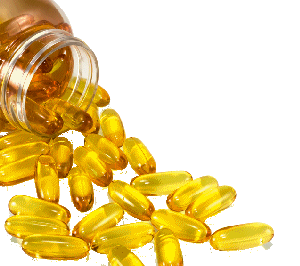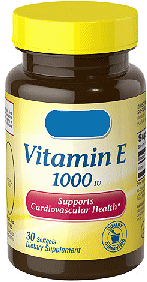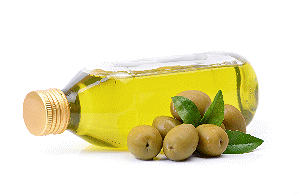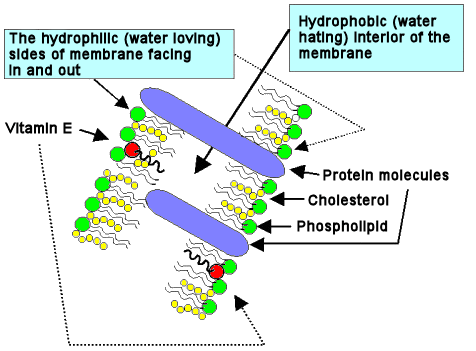
![]()
Vitamin E
The 'sex drug'
![]()
![]()
Molecule of the Month September 2016
(Updated Sept 2019)
Also available: JSMol version.
![]()

 |
Vitamin EThe 'sex drug'
Molecule of the Month September 2016
|
 |
Well, that’s the nickname given to it on the internet.
It was discovered in 1922 by two researchers at the University of California in Berkeley. Herbert Evans, a research physician, and his assistant, Katherine Bishop, had been feeding rats a diet consisting mostly of lard, which had made the rats infertile. When these rats were then given an oily extract from wheatgerm, their infertility was cured. It seemed that something in the wheatgerm was a necessary ingredient for the rats to be fertile. After a few years’ work, the active compound was extracted and initially called the ‘anti-sterility factor’, later renamed as vitamin E. As a result, vitamin E required a mystique as a restorer and even enhancer of sexual and reproductive function, and this was compounded when it was given the official chemical name, tocopherol, from the Greek toc (child), phero (to bring forth), and –ol because it behaved chemically like an alcohol. It was even known colloquially at the time as "oil of fertility". Perhaps not surprisingly, within a decade vitamin E supplements became available as a panacea for a variety of sexual ailments, from impotence to erectile dysfunction.
 And does it work?
And does it work?To date, there is no credible scientific evidence that vitamin E supplements provide any benefits in sexual performance in humans. But this lack of evidence hasn’t stopped suppliers selling vitamin E as the cure-all for almost every sexual ailment. Unfortunately, this has given vitamin E a rather dubious reputation among serious scientists, the downside of which is that it has discouraged many reputable researchers from exploring its actual benefits in properly designed clinical studies.
Vitamin E is the name given to a combination of 8 different molecules, α-, β-, γ- and δ-tocopherol and α-, β-, γ- and δ-tocotrienol, which are synthesised by plants and eaten by us as food. However only one of these, α-tocopherol, is predominantly used by the body, with the others mostly being either excreted or converted into α-tocopherol in the liver. However, there has been very little research into the other components, so their functions in the body (if any) remain unclear.
The tocopherols have a phenolic head group and a long saturated hydrocarbon tail...
 | α-tocopherol |
 | β-tocopherol |
 | γ-tocopherol |
 | δ-tocopherol |
...whereas the corresponding tocotrienols have the same phenolic head group but a long unsaturated hydrocarbon tail.
 | α-tocotrienol |
 | β-tocotrienol |
 | γ-tocotrienol |
 | δ-tocotrienol |
Vitamin E is synthesized by plants and is found in a variety of foodstuffs including oils, meat, eggs, and leafy vegetables. It’s found in high amounts, though, in many plant seeds, such as sunflower seeds, almonds and hazelnuts, and in many vegetable oils (e.g. canola oil and olive oil). Other sources include avocado, tomato, spinach, asparagus, Swiss chard, and broccoli. Most healthy people on a normal diet obtain their recommended daily intake of vitamin E simply by eating sensible and varied foods.


Cereals, wheat germ, and bread are good sources of vitamin E, as are olive oil, tomatoes, asparagus and almonds.



In a word, no! Nearly all those websites are trying to sell you the supplements, and they don’t mind exaggerating the truth a bit to sell more of their expensive product. The fact is that although some trials have suggested there may be some benefits of taking vitamin E supplements for some ailments, many other trials have shown the exact opposite; and all the double-blind random clinical trials on vitamin E so far have shown no proven benefit when taking vitamin E supplements over a placebo. The general consensus of medical researchers at the moment is that, except for a couple of very specialised and specific ailments, the case for vitamin E is most definitely unproven. What’s worse, is that many of these websites use the word ‘natural’, as in “vitamin E is a natural remedy for (insert disease here)”, because the general public mistakenly associate the word ‘natural’ with ‘safe’.
Eaten as part of a normal diet, the amount ingested is perfectly safe. But supplements can often contain tens or hundreds of times the recommended maximum daily dose, and then there are risks of overdose.
One of the effects of vitamin E is to dilate blood vessels making it easier for blood to flow (which is where the alleged link with treating erectile dysfunction came from). So too much vitamin E can cause excessive bleeding, strokes, and can interfere with the actions of vitamin K (see MOTM May 2016) preventing blood clotting, especially in individuals taking anticoagulant drugs like warfarin. It may also reduce the cholesterol-busting effects of some statins, such as simvastatin.
Yes, the FDA has formally recognized vitamin E as an essential nutrient for humans since 1969. But its main role is as a fat-soluble anti-oxidant, which means it can reach parts of the body, such as cell membranes, that water soluble anti-oxidants (such as vitamin C) cannot. Cell membranes are mostly made of unsaturated lipids (fats), which can be attacked by peroxide ions. These peroxide ions are often called ‘free radicals’ by medics, and are present in the body as a natural by-product of metabolism, or at higher doses due to a poor diet or smoking. The peroxides oxidise and attach to the lipid sidechains, producing lipid peroxides, which can diffuse around the body, attacking further cell membrane lipids. Or the peroxide 'attacker' can propagate along the membrane, ‘unzipping’ it, eventually killing the cell.
The phenolic H of α-tocopherol can be easily donated to the peroxide radical, converting it into harmless water, thereby halting its propagation through the membrane. The shape of the tocopherol molecule is key to its effectiveness. It has a hydrophilic head-group, and a hydrophobic tail. This allows it to bind to the cell membrane with the head-group in the aqueous part and the tail embedded in the fatty interior. As the peroxidation reaction proceeds down the cell membrane, it eventually meets the tocopherol molecule, lying in ambush, which disarms the attacker and stops the membrane unravelling further.

Position of the tocopherol in a cell membrane.
(adapted from: The American Nutrition Association website)
The α-tocopherol is ‘used up’ in this process, but it can be regenerated by reaction with other anti-oxidants, such as vitamin C. Thus, vitamins E and C can be thought of as acting in partnership to protect cell membranes from damage.
Maybe - in August 2019 a number of reports of serious lung disease were reported in various States in the US. The common factor in all of them was vaping, inhaling the vapour from flavoured e-cigarettes. Lab tests on the vaping liquids found that over half of them contained vitamin E acetate, which was being added to the vaping liquids to make them thicker and more viscous.
Yes, α-tocopheryl acetate. At the time of writing (Sept 2019), vitamin E acetate has not been definitively blamed for the outbreak, but it's definitely under suspicion.
It’s not a sex drug, remember. Despite all the claims by online pharmacies, 'nutrition' websites, and snake-oil salesmen, none of the alleged sexual enhancements of vitamin E have ever been verified by proper clinical trials. Until they are, you’re probably far better off just eating a bowl of cereal every breakfast than buying expensive, ineffective supplements. Or buy Viagra – at least that has been proven to work!
![]()
![]()
![]() Back to Molecule of the Month page. [DOI:10.6084/m9.figshare.5259922]
Back to Molecule of the Month page. [DOI:10.6084/m9.figshare.5259922]